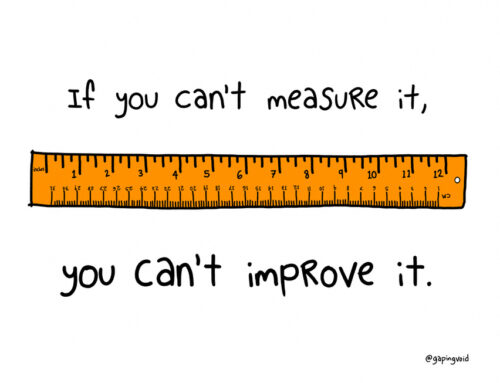The DMPP Model
January 25, 2022
Categories: Change
I’ve been working on a model to help people make changes their lives, and I’d like to share it with you. The model has four steps: (1) Dream, (2) Method, (3) Psychology, and (4) Physiology.
Step #1: Dream
The first step is Dream. This step has to do with figuring out what you want. In other words, what do you want to change or be different in your life? What direction do you want to head? Here are 3 things to consider when working through this step.
- Miracle Question. It can be helpful to ask yourself the miracle question. It goes something like this: Imagine you go to sleep tonight, and something magical happens. You wake up the next morning and your life is exactly how you would like it to be. Your problems are worked out, and everything is as you want it. What would your life look like? What would you be doing? How would you feel? Who would you be in relationship with? The answers to these questions can help you hone in on what you want in your life.
- Values. Values are those things that are most important to us in life. They guide our decisions and actions. They also can be thought of as directions of committed action. Your values guide the direction of your life—they tell you where you want to be headed. For example, some of my values are living a healthy lifestyle and pursuing meaningful work.
- Goals. Goals are distinct from values. Values tell you the direction you are headed, whereas goals are specific things you can accomplish and check off your list. Goals can be helpful because they let you know you are heading in the direction of your values. For example, losing 10 pounds might be a goal, and it lets you know that you are heading in the direction of your value (i.e., living a healthy lifestyle).
Step #2: Method
The second step is Method. This step has to do with figuring out how to move toward your dream. It involves the day-to-day behaviors that you engage in. Here are 3 things to consider when working through this step.
- Whatever you want, there is a method out there. You aren’t the first person who has tried to lose weight, have a better marriage, or get out of debt. I guarantee someone has succeeded at the thing you are trying to do, and has discussed or written down the steps you need to take to get there. There isn’t anything new under the sun.
- Don’t reinvent the wheel. Because there is a method out there, use the knowledge of others. Take advantage of the wealth of information available. If someone has discovered a method that works, it makes sense to copy the method and see if it works for you as well. Don’t operate by trial and error. Utilize the experience of others to inform your own method.
- Follow the lead of experts. Seek out the experts in whatever area you are trying to improve. I try to find someone who has succeeded in a BIG way, and observe what they do. Usually they have a book or website that walks through their process. Find the best of the best, and follow their lead.
Step #3: Psychology
The third step is Psychology. One of the challenging things about life is that even if you know what you need to do, sometimes you can’t make it happen. You might have the best method in the world, but for whatever reason, you can’t seem to implement your plan consistently. This is where psychology comes in. Here are 3 things to consider when working through this step.
- Self-limiting beliefs. Sometimes we have beliefs that hold us back. Our beliefs are based on our history and actions. So, if we haven’t succeeded at something, our beliefs might be negative and disempowering. Our beliefs can hold us back. We might not try something new, because we fear failing again. It’s important to work through self-limiting beliefs, so they don’t hold us back from changing.
- Past impacts the present. Our past can impact our present, for better or worse. The relationship we had with our primary caregivers provides a model for our expectations in future relationships. If our parents neglected us or were abusive, we might have negative expectations for relationships moving forward. Similarly, if we failed at school or sports growing up, we might not believe we can succeed. Even though our situation may have changed as adults, our past can still creep up and hold us back. It’s important to work through our past so it doesn’t negatively impact our present.
- Behavioral change principles. Psychologists have figured out some principles for how people can make changes in their behavior. For example, it’s important to follow the 5 S’s:
- Adjust the surroundings. People don’t often think about the power of the environment to help (or hurt) our ability to change. Make your environment work for you, not against you.
- Start small. Don’t bite off more than you can chew. Start with a small change at first, get some success, and then slowly work up from there.
- Be specific. Don’t make broad, ill-defined goals. Be very clear and specific about what you are trying to do, and what would constitute success.
- Schedule it in. Research has found that it takes about 66 days of trying to change something before it starts to feel natural. So, for the first 2-3 months, schedule in the behavior like you would an appointment on your calendar.
- Find a support team. You can’t change by yourself. Find a group of people to help support you and keep you accountable.
Step #4: Physiology
The fourth step is Physiology. Our bodies and our physical state can have a big impact on our ability to change something in our lives. Here are 4 things to consider when working through this step.
- Exercise. Our bodies were designed to move. You won’t be at your best if you are living a sedentary lifestyle. Aim to exercise at least 3 times per week, 30-60 minutes per session. It doesn’t matter what kind of exercise you do. Find something you like, and stay consistent.
- Sleep. Many of us live our lives tired. We don’t get enough sleep and rest. Aim for 7-8 hours of sleep per night. Also, try to get on a schedule where you go to bed and wake up at the same time every day.
- Nutrition. You won’t be able to function at your best if your diet consists of fast food and energy drinks. Eat plenty of nutritious food every day. Try to prioritize natural foods and cut down on processed foods. Focus on fruits, vegetables, meats, nuts, and seeds. Limit starches and sugar. Limit (or cut out) alcohol and caffeine. Drink lots of water.
- Priming your state. It’s possible to put yourself in a positive and powerful state. Click on this link to learn a process for how to anchor a powerful state.
Discussion
What do you think about the DMPP model? What is one thing you are trying to change in your life? Try walking through the steps and see what happens. Which step was most helpful for you? Which step are you still struggling with?

Related Thoughts

Subscribe To My Newsletter
Join my mailing list to receive the latest blog posts.
Receive my e-book “The Mental Health Toolkit” for free when you subscribe.





